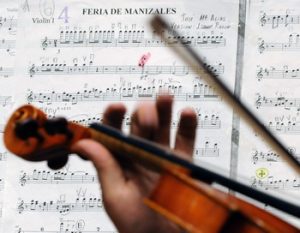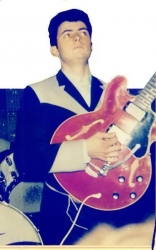Mozart effect
 Listening to Mozart’s music enhances our brain activity. After listening to Mozart, people responding to the standard IQ test demonstrate an increase in intelligence.
Listening to Mozart’s music enhances our brain activity. After listening to Mozart, people responding to the standard IQ test demonstrate an increase in intelligence.
This phenomenon discovered by some scientists was called the “Mozart effect.” Far-reaching conclusions were immediately drawn from it, especially with regard to the upbringing of children, whose first three years of life were proclaimed decisive for their future intelligence.
This theory received such a strong public response that Mozart’s CDs, with the appropriate recommendations of parents, hit the very beginning of the bestseller lists, and the Governor of the US state of Georgia presented a Mozart CD to each new mother in his staff.
True, the excitement subsided somewhat after some skeptics tried to check the “Mozart effect” and did not get the predicted result. As for children, in his book, an authoritative specialist in brain research and knowledge of John Broyer shows that the “myth of the first three years” of life has no basis and the human brain continues to change and learn throughout life.
Nevertheless, the intriguing hypothesis about the effect of music on brain activity not only keeps going, but in recent years has even received a whole range of new weighty evidence, both subjective and objective.
What is true here, what is just a lie, and what is statistics?
For the first time, this idea came across more than ten years ago by neuroscientist Gordon Shaw of the University of California (USA) and his graduate student Leng during the first attempts to simulate the brain on a computer.
It is known that various groups of nerve cells in the brain perform various kinds of mental operations. Shaw and Leng created models of some such group of “cells” (actually electronic units) in a computer and checked what would happen if we changed the ways of connecting these “cells” with each other.
They found that each connection scheme, that is, each successive “network” formed by the same cells, generates output signals of a different form and rhythm. Once it occurred to them to convert these output signals into sound ones. To their great surprise, it turned out that all these signals had a certain musical character, that is, they reminded some kind of music, and moreover – with each change in the ways of connecting the cells into a network, the character of this “music” changed: sometimes it resembled meditative melodies like “New Age” , sometimes – oriental motifs, and even classical music.
But if performing mental operations in the brain has a “musical” character, thought Gordon Shaw, can it not be that music, in turn, is able to influence mental activity, initiating certain neural networks?
Since these networks are formed in childhood, Shaw decided to use the works of Mozart to test his hypothesis, who, as you know, began composing music at the age of four. If something can affect the innate neural structure, the scientist argued, then it should be Mozart’s children’s music.
Gordon Shaw and his colleague psychologist Francis Rauscher decided to use the standard IQ test for the experiment to test whether Mozart’s music can stimulate the ability to mentally manipulate geometric shapes.
The ability to imagine different stereoscopic objects in imagination when changing their position in space (for example, turning around its axis) is necessary in a number of exact sciences, for example, in mathematics.
In 1995, Shaw and Rauscher published the results of a study in which 79 college students participated. Students were asked to answer which forms could be obtained from a paper napkin, folding it and cutting it out in various ways.
At the end of the test, students were divided into three groups. The students of the first group sat for 10 minutes in complete silence, the second group all this time listened to the recorded story or repetitive primitive music; students of the third group listened to Mozart’s piano sonata.
After that, all participants in the experiment repeated the test. And here are the results. While the first group improved its results by 14, and the second – by 11 percent, the Mozart group correctly predicted 62 percent more forms than in the first test.
Another employee of Gordon Shaw, Julien Johnson from the Institute of Aging of the Brain at the University of California, performed the same test with paper folding and cutting out figures among Alzheimer’s patients, who often had a weakened spatial representation.
In a preliminary experiment, one of the patients after receiving a ten-minute “dose” of Mozart improved his results by three to four correct answers (out of eight). Silence or popular music of the thirties did not give such an effect.
However, the experiment of Shaw and Rauscher caused criticism from other researchers. Kenneth Steele, a psychologist at North Carolina State University (USA), reported that he repeated this test among 125 people, but did not find signs of the influence of Mozart’s music on the subjects.



